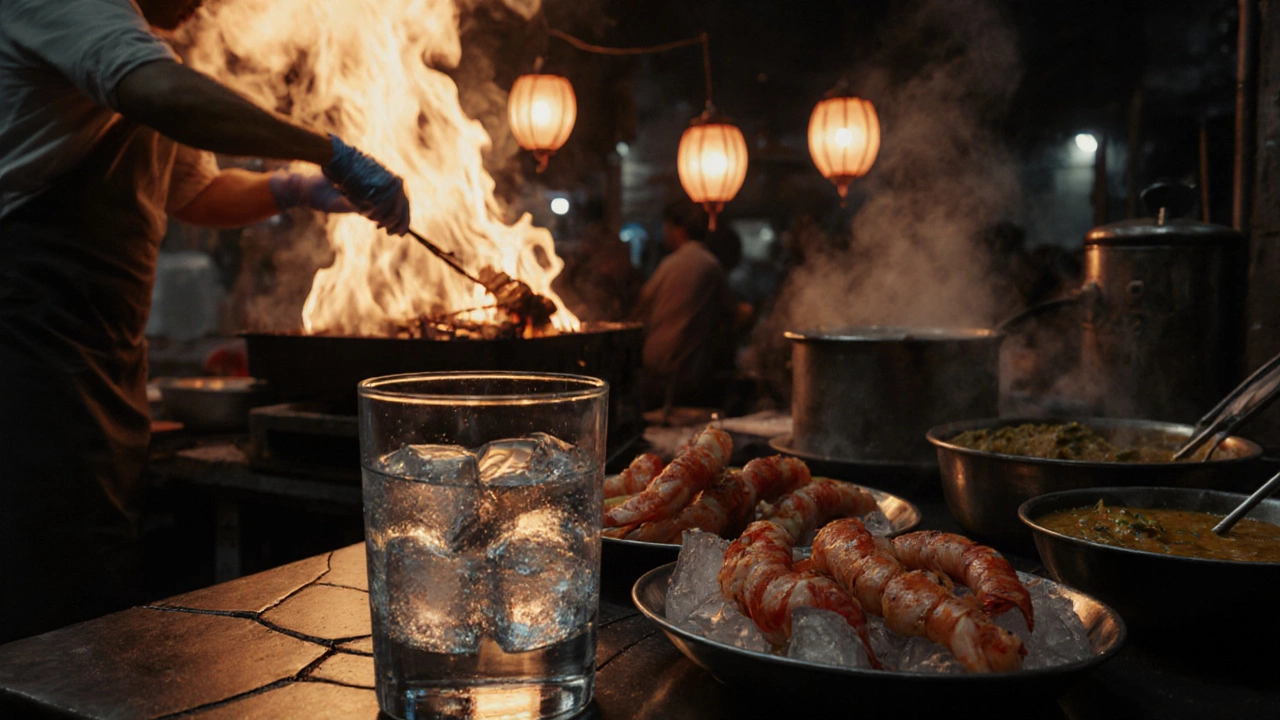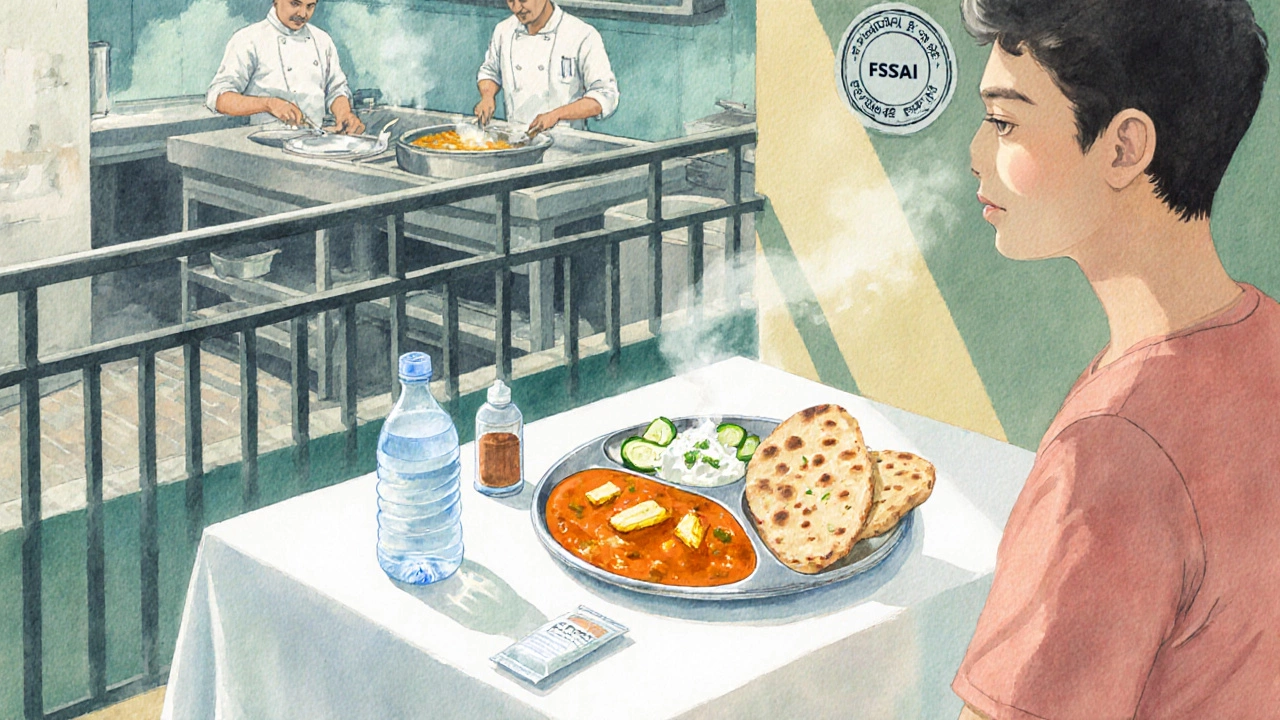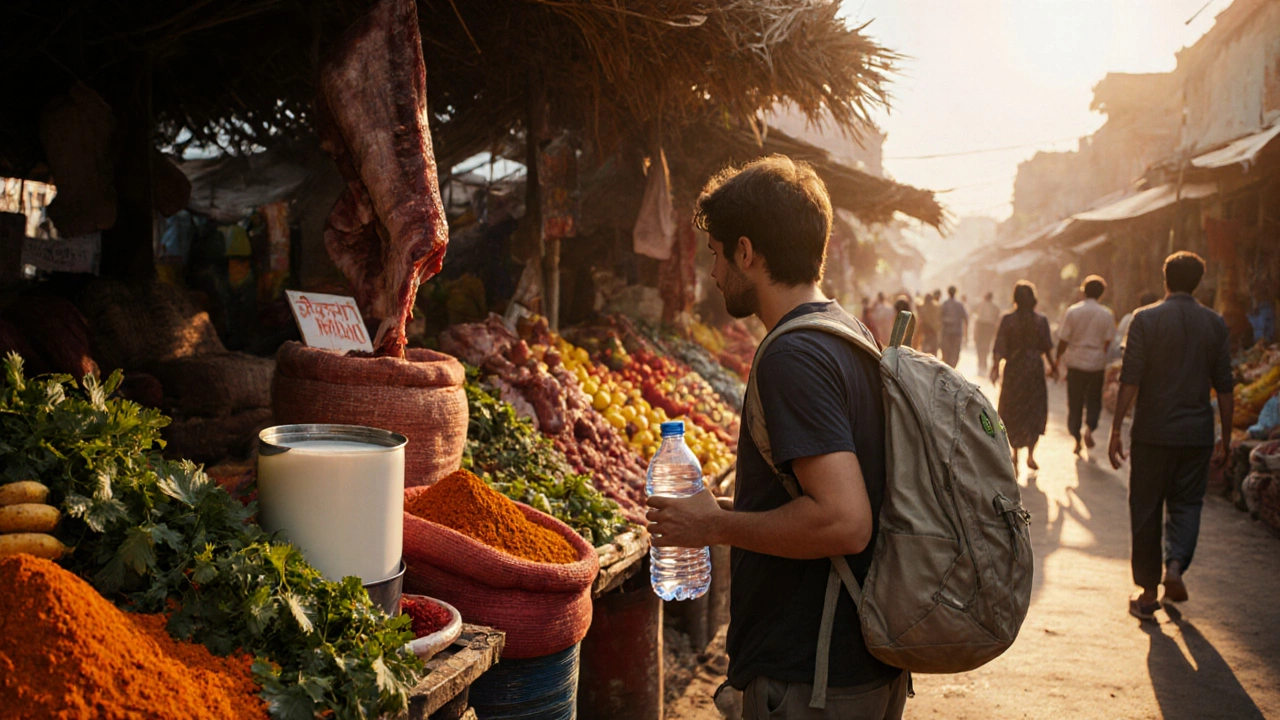India Food Safety Checker
Assess the risk level of food and drinks in India based on key safety factors. Based on WHO guidelines and local food safety practices.
Select Food Type
Risk Assessment Result
Select your food options and click "Assess Risk" to see your safety status.
Why This Matters
The WHO reports that up to 30% of international visitors in South Asia experience food-borne illnesses. Risk levels are determined by your answers using guidelines from the article.
If you're wondering what not to eat in India, you’re not alone. Millions of visitors flock to the subcontinent each year, and most love the flavors, but a few common food missteps can turn an unforgettable trip into a bout of stomach trouble. This guide breaks down the dishes, drinks, and street‑side snacks that should raise a red flag, why they’re risky, and how you can still savor Indian cuisine safely.
Key Takeaways
- Avoid raw or undercooked meat, eggs, and seafood unless you’re sure they’re freshly prepared and hot.
- Never drink tap water; stick to bottled, filtered, or boiled water.
- Be cautious with unpasteurized dairy products, especially in rural areas.
- Watch out for street‑food hygiene: look for vendors with high turnover and clean cooking surfaces.
- Know common allergens like peanuts, sesame, and certain spices if you have sensitivities.
Indian cuisine is a vibrant tapestry of regional flavors, cooking techniques, and seasonal ingredients. From the buttery dal of the north to the coconut‑laden curries of the south, the food tells a story of geography and history. Yet, the same diversity brings a variety of food‑safety challenges for travelers unfamiliar with local practices.
Why Food Safety Matters in India
India’s climate-hot, humid, and densely populated-creates an ideal environment for bacteria like Salmonella, E. coli, and Vibrio cholerae. According to the World Health Organization, food‑borne illnesses affect up to 30 % of international visitors in South Asia each year. Most cases stem from contaminated water, poorly cooked meat, or unhygienic street vending conditions.
Common Pitfalls for Travelers
Even seasoned foodies can slip up. Here are the typical traps:
- Assuming “fresh” means safe - In bustling markets, “fresh” often refers to how recently the item was bought, not how it’s been stored.
- Skipping the spice‑level cue - Extremely spicy dishes can mask the taste of spoiled ingredients.
- Trusting appearance over temperature - A steaming bowl may look perfect, but if the heat source is weak, pathogens can survive.

Foods to Avoid Outright
Below is a quick‑reference table listing foods that most health agencies recommend steering clear of unless you’re absolutely sure of their preparation standards.
| Food Item | Why It’s Risky | Safer Alternative |
|---|---|---|
| Raw milk and unpasteurised dairy | High chance of foodborne illness from pathogens like Listeria | Pasteurised milk, paneer from reputable brands |
| Tap water & ice cubes | Often contaminated with microbes; inadequate treatment | Bottled water (sealed), boiled water, or filtered water |
| Undercooked pork, chicken, or lamb | Risk of Salmonella and Campylobacter | Well‑cooked dishes served piping hot (e.g., tandoori chicken) |
| Street‑sold seafood (raw pistachios, crabs) | Often handled without refrigeration; shellfish can harbour toxins | Cooked fish dishes from established eateries |
| Unhygienic street snacks (chaat with unknown toppings) | Potential cross‑contamination; exposure to flies and dust | Snacks prepared in front of you on a clean grill (e.g., dosa) |
| Old fruit salads with dairy | Milk products spoil quickly in heat | Fresh fruit without added dairy, or fruit chaat with citrus |
| Home‑made pickles without proper fermentation | Improper acidity can allow bacterial growth | Commercially bottled pickles with sealed lids |
Situations Where Caution Is Needed
Not every dish is a clear‑cut no‑go. Use your senses and follow these guidelines:
- Check the cooking temperature. Food should be sizzling or steaming. If it looks lukewarm, walk away.
- Observe the vendor’s hygiene. Look for clean hands, covered hair, and a tidy workstation. Vendors who keep their cooking pots covered are usually more careful.
- Ask about ingredients. Many regional dishes contain peanuts, sesame, or specific chilies that trigger allergies. Don’t be shy about requesting a list.
- Prefer high‑turnover stalls. A line of locals means the food is freshly made and less likely to sit out.
- Watch for sealed packaging. Packaged snacks bearing the FSSAI logo have passed basic safety checks.

How to Eat Safely While Still Enjoying Indian Flavors
Travelers don’t have to miss out on India’s culinary magic. Follow these practical steps:
- Stay hydrated with safe water. Carry a reusable bottle and fill it only from sealed vendors or trusted hotel dispensers.
- Eat hot, eat fresh. Choose dishes that are cooked to order and served hot. Avoid anything that’s been sitting out for more than an hour.
- Choose reputable establishments. Look for places that display a clean rating or have good online reviews (TripAdvisor, Google).
- Bring your own spices or sauces. If you’re allergic to peanuts or sesame, carry a small sachet to add flavor without risk.
- Use hand sanitizer. Before eating, wipe your hands even if you’ll use utensils.
- Carry anti‑diarrheal medication. A single dose of loperamide can keep minor upset stomachs from ruining your trip.
Quick Checklist Before You Order
- Is the food cooked at least 75 °C (165 °F)?
- Is the water source sealed or boiled?
- Does the vendor wear gloves or use tongs?
- Are you aware of all ingredients (especially nuts, dairy, seafood)?
- Do you have a backup meal plan if something looks off?
Conclusion: Enjoy the Taste, Skip the Trouble
India’s food scene is a feast for the senses, and with a few smart choices you can explore it without the dreaded stomach upset. Remember the core rule: if you can’t verify how a dish was prepared, it’s safer to pass. By staying hydrated, opting for hot and freshly cooked meals, and keeping an eye on hygiene, you’ll walk away with memories of flavors, not illnesses.
Can I drink tap water in major Indian cities?
No. Even in metros like Delhi or Mumbai, tap water can harbor microbes. Stick to bottled, boiled, or filtered water, and avoid ice unless you know it’s made from safe water.
Is street‑side chai safe?
Usually, yes-if the tea is brewed boiling hot and the milk is freshly boiled. Watch the vendor’s cleanliness; a clean kettle and covered pot are good signs.
What about fruit you buy from a market?
Peel the fruit yourself and wash it with clean, boiled water. Avoid pre‑cut fruit salads unless you’re sure they were prepared in a hygienic environment.
Are vegetarian dishes risk‑free?
Not always. Many veg dishes use dairy or butter that can spoil in heat. Verify that the milk or paneer is freshly cooked and served hot.
How can I recognise a reputable street vendor?
Look for a steady line of locals, a clean cooking area, covered pots, and a visible hygiene rating or FSSAI seal on the stall.
